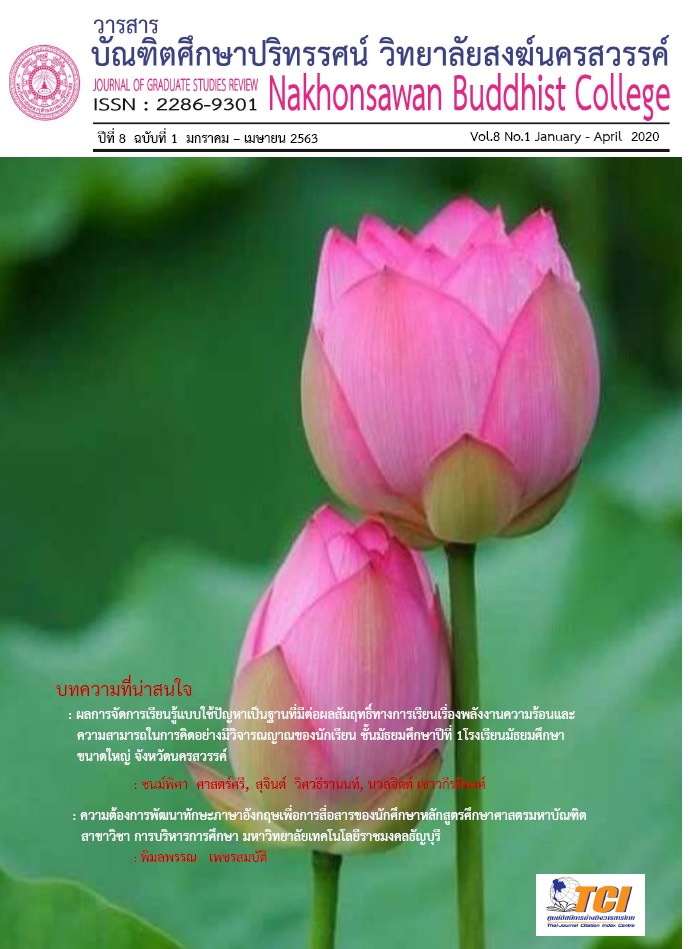An Analytical Study of Thai Society Belief in Naga according to Buddhism
Main Article Content
Abstract
This research aims were to study Naga in the Buddhist Scriptures, to understand the belief of Naga in Thai society, and to analyze the Belief of Naga in Thai society to Buddhism. Tt was a qualitative research focus on the study of evidences in Tripitaka, Exegesis and the local legend. The data analyzed together with In-depth Interview by using Descriptive method.
The results of study were found that:
- Naga was considered be as a symbol of river, life, fertility, virtue and evil. Buddhism believes that Naga can be born in 4 ways: is Egg born, Womb born, Moisture born, And Spontaneously born. The Naga was catergorised into 4 families according to their skin colours: golden, green, rainbow and black.The doctrine of Karma was intertwined with the births of Naga.
- Thai society consider Naga as a spiritual anchor when they face instability or need moral boost. Created varied beliefs such as – the Water Naga, the Naga’s city creation and the Naga Fireballs. This has developped into the cultural traditions which still widely practices in Thailand today.
- Thai people believes in the existence of Naga by a coomon belief without proving (Acinteyya). The belief in Naga’s worship for fulfilling wishes Thai society still mainly believes in the law of actions (Karma). When Thai society realize the benevolent of Naga, they consequently create the Naga artifacts and traditions with faith (Saddha) to commemorate.
Article Details
Section
บทความวิจัย (Research Articles)


